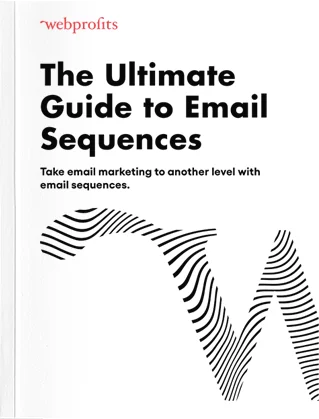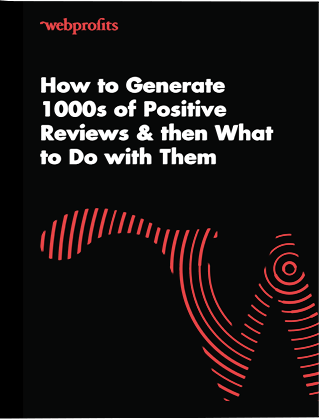SEO Guide To Launching A New Website
 With all the time, effort and money that goes into getting top SEO rankings and building a stream of consistent organic traffic, great care must be taken when developing and launching a new website that replaces an existing one.
With all the time, effort and money that goes into getting top SEO rankings and building a stream of consistent organic traffic, great care must be taken when developing and launching a new website that replaces an existing one.
It can take months or even years to get top SEO rankings but you can lose these rankings in a matter of hours. With this in mind, here are a set of guidelines to help maintain your website’s SEO value and minimise any negative impact on your rankings.
Maintaining URLs and Linking Structure
If your website has been online for a while then you have likely built some value for your current website through internal and inbound links. Before you develop your new website it’s important to keep in mind that any changes to the URL of any existing pages will diminish the value of those pages. With this in mind, and wherever possible, you should maintain the same URLs and linking structure in your new website.
If your website has a large number of pages indexed by Google or if internal pages on your current website are already ranking you should use the same URL structure for those pages so that all previous links do not need to be redirected. If your current website uses a search-engine-friendly link structure it would be best for SEO purposes if that structure was carried across to your new website.
Redirecting Old URLs
Now of course it would be ideal for your website’s SEO if you could keep the same URLs but in some cases you might not be able to. For example, there may be some pages on the old website that no longer exist when the new site is launched, such as old products or categories.
In these cases, even though an old link may no longer exist in the new website you can still maintain much of the SEO value by setting up a 301 redirect from the old URL to a similar or corresponding URL on the new site. If there is no corresponding page on the new site then you can simply setup the redirect to go to your homepage.
A 301 redirect tells search engines that a page has been permanently moved to a new location. Once this is picked up, whenever someone tries to access the old URL it will automatically redirect them to the new URL. 301 redirects can be setup using an htaccess file on Linux servers or through the backend of a Windows server.
Google Analytics
Commonly overlooked by many developers during the commotion of launching a new website is transferring your Google Analytics code to the new website before launching. Doing this ensures that there is no lost analytics data when the new website is launched, allowing you to see how the new website is performing right away. You can also create an annotation within Google Analytics for the date the new site launched. This comes in handy when you are comparing website performance before and after the launch.
Conversion Tracking
A new website can also mean that there will be new actions available on your website, or at least changes to the existing ones. Perhaps you have a new enquiry form or maybe a new ecommerce section to sell products.
If you have new conversion targets available when the new site launches, be sure to add new Goals in Google Analytics, or any other tracking software you use, using the ‘thank you’ page URLs. If you have a new URL for the same type of conversion you should update the Goal tracking URL when the new site is launched.
Additionally, if you have any advertising campaigns running, such as Google AdWords, you will need to install the conversion tracking code on the new ‘thank you’ pages as well.
Title Tags & Meta Tags
If you optimised your old site for SEO then you likely updated the title tags and meta tags of your website. When launching a new website, you may need to re-optimise the new site in the same way using your target SEO keywords.
Whatever the case may be you should always review the new website before launching to make sure it is optimised for search engines. If your home page or any internal pages from the old site are already ranking and you want to keep those rankings then you should also make sure that the new website maintains similar title tags and meta tags for each page.
And be sure to optimise the title tags and meta description tags for any new pages that have been created, to help them rank better.
Home Page Link
A common mistake made on many websites is having multiple versions of the homepage; for example, a website could be displayed as example.com, www.example.com, example.com/index.html, etc. It is SEO best practice to ensure the home page is accessible through a single URL (eg www.example.com) and then ensuring that any pages linking to the home page use this URL in the link. This includes the navigation menu, the logo, the footer links and so on.
Additionally, once the preferred format is selected (with or without the ‘www’ in the URL) a 301 redirect should be setup to redirect the other format to the preferred version. For example, if you prefer to have your website display as www.example.com then you should setup a redirect to ensure the non-www version of the site redirects to the www version of the site.
Footer Links
Internal linking is essential in affordable SEO to allow search engines to easily find the various sections of your website. Furthermore, the anchor text in links is used by search engines to help determine the topic of a web page. Footer links on a website are one of the best methods to assist search engines to find content on your website, to index internal pages, and to identify the content of the internal pages. When launching a new website, be sure to use footer links that have a purpose and use anchor text that corresponds to the keywords for which you want the pages of your website to rank.
Submit a New Sitemap to Google
After the new website is finalised and launched, you should create a new XML sitemap and submit it to Google for faster indexing of the new site. A great software tool that automatically generates an XML sitemap is XML-sitemaps.com.
Once the sitemap file for the new website is generated, upload it to the root folder of your website and submit the file in the Sitemaps section of Google Webmaster Tools.
Monitor Google Webmaster Tools
With all the planning that can go into launching a new website, there can still be instances of technical issues or a drop in rankings. The Diagnostics section of Google Webmaster Tools offers a range of options to identify and repair these issues.
Over the first few weeks after launching your new website you should check this section of Webmaster Tools to see if Google has picked up any errors. In particular, there are two sections to monitor closely:
- Crawl errors – This section provides a list of pages that Google was unable to access, the details of the error, and in some cases the source of the error. This tool can also be of great use in identifying any pages from the old website that no longer exist and were missed during the above step. Whatever the reason, if any URLs are listed in this section you should either resolve the issue with the specific page or setup a 301 redirect to a similar page.
- HTML suggestions – This tool identifies errors in the titles and meta tag content of your website, such as missing or duplicate title tags. Any pages listed in this section should be optimised for search engines as suggested above.
Following these suggestions will definitely help you keep your hard-earned rankings and traffic. Be sure to keep these in mind prior to starting development on your new website, and even pass them on to your web designers. Most of us have heard that prevention is the best medicine, and launching a new website is no different. It’s far easier, and generally less expensive, to prevent issues from happening than it is to fix them.












Hey George,
Great information. You certainly don’t want to loose any of the value you’ve already built up for your website’s SEO ranking. Good luck with your work.
Looks like you covered everything here. You certainly are right, prevention is better than cure!
You’ve made great points on this topic. This article is a breath of fresh air. Great job on this
i have been struggling with my blogs for a while now, but this information has broadened my mind.thanks a lot.
Good read! although I have seen pages with absolutely no description take rank #1 in google which usually uses the opening paragraph.
I had been really waiting for such a long time for a nice site like it. Thanks for suggest.